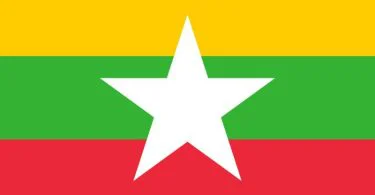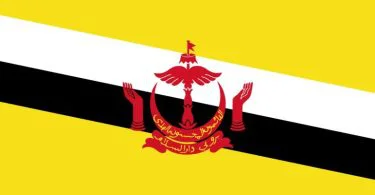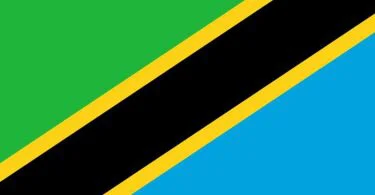CHAPTER 1. FOUNDING PROVISIONS 1. Republic of South Africa 2. Supremacy of Constitution 3. Citizenship 4. National anthem 5. National flag 6. Languages 3 CHAPTER 2. BILL OF RIGHTS 7. Rights 8. Application 9. Equality 10. Human dignity 11. Life 12. Freedom and security of the person 13. Slavery, servitude and forced labour 14. Privacy 15. Freedom of religion, belief and opinion 3 16. Freedom of expression 17. Assembly, demonstration picket and petition 18. Freedom of association 19. Political rights 20. Citizenship 21. Freedom of movement and residence 22. Freedom of trade, occupation and profession 23. Labour relations 24. Environment 25. Property 26. Housing 27. Health care, food, water and social security 28. Children 29. Education 30. Language and culture 31. Cultural, religious and linguistic communities 32. Access to information 33. Just administrative action 34. Access to courts 35. Arrested, detained and accused persons 36. Limitation of rights 37. States of emergency Table of Non-Derogable Rights Row 1 Column 1. Section number Column 2. Section title Column 3. Extent to which the right is non-derogable Row 2 Column 1. Section number Column 2. Section title Column 3. Extent to which the right is non-derogable Row 3 Column 1. Section number Column 2. Section title Column 3. Extent to which the right is non-derogable Row 4 Column 1. Section number Column 2. Section title Column 3. Extent to which the right is non-derogable Row 5 Column 1. Section number Column 2. Section title Column 3. Extent to which the right is non-derogable Row 6 Column 1. Section number Column 2. Section title Column 3. Extent to which the right is non-derogable Row 7 Column 1. Section number Column 2. Section title Column 3. Extent to which the right is non-derogable 38. Enforcement of rights 39. Interpretation of Bill of Rights CHAPTER 3. CO-OPERATIVE GOVERNMENT 40. Government of the Republic 41. Principles of co-operative government and intergovernmental relations CHAPTER 4. PARLIAMENT 42. Composition of Parliament 43. Legislative authority of the Republic 44. National legislative authority 45. Joint rules and orders and joint committees Part A. The National Assembly 46. Composition and election 47. Membership 48. Oath or affirmation 49. Duration of National Assembly 50. Dissolution of National Assembly before expiry of its term 51. Sittings and recess periods 52. Speaker and Deputy Speaker 53. Decisions 54. Rights of certain Cabinet members and Deputy Ministers in the National Assembly 55. Powers of National Assembly 56. Evidence or information before National Assembly 57. Internal arrangements, proceedings and procedures of National Assembly 58. Privilege 59. Public access to and involvement in National Assembly Part B. National Council of Provinces 60. Composition of National Council 61. Allocation of delegates 2 62. Permanent delegates 63. Sittings of National Council 64. Chairperson and Deputy Chairpersons 65. Decisions 66. Participation by members of National executive 67. Participation by local government representatives 68. Powers of National Council 69. Evidence or information before National Council 70. Internal arrangements, proceedings and procedures of National Council 71. Privilege 72. Public access to and involvement in National Council Part C. National Legislative Process 73. All Bills 74. Bills amending the Constitution 75. Ordinary Bills not affecting provinces 76. Ordinary Bills affecting provinces 77. Money Bills 78. Mediation Committee 79. Assent to Bills 80. Application by members of National Assembly to Constitutional Court 81. Publication of Acts 82. Safekeeping of Acts of Parliament CHAPTER 5. THE PRESIDENT AND NATIONAL EXECUTIVE 83. The President 84. Powers and functions of President 85. Executive authority of the Republic 86. Election of President 87. Assumption of office by President 88. Term of office of President 89. Removal of President 90. Acting President 91. Cabinet 92. Accountability and responsibilities 93. Deputy Ministers 94. Continuation of Cabinet offer elections 95. Oath or affirmation 96. Conduct of Cabinet members and Deputy Ministers 97. Transfer of functions 98. Temporary assignment of functions 99. Assignment of functions 100. National intervention in provincial administration 101. Executive decisions 102. Motions of no confidence CHAPTER 6. PROVINCES 103. Provinces 3 Part A. Provincial Legislatures 104. Legislative authority of provinces 105. Composition and election of provincial legislatures 106. Membership 107. Oath or affirmation 108. Duration of provincial legislatures 109. Dissolution of provincial legislatures before expiry of term 110. Sittings and recess periods 111. Speakers and Deputy Speakers 112. Decisions 113. Permanent delegates’ rights in provincial legislatures 114. Powers of provincial legislatures 115. Evidence or information before provincial legislatures 116. Internal arrangements, proceedings and procedures of provincial legislatures 117. Privilege 118. Public access to and involvement in provincial legislatures 119. Introduction of Bills 120. Money Bills 121. Assent to Bills 122. Application by members to Constitutional Court 123. Publication of provincial Acts 124. Safekeeping of provincial Acts Part B. Provincial Executives 125. Executive authority of provinces 126. Assignment of functions 127. Powers and functions of Premiers 128. Election of Premiers 129. Assumption of office by Premiers 130. Term of office and removal of Premiers 131. Acting Premiers 132. Executive Councils 133. Accountability and responsibilities 134. Continuation of Executive Councils after elections 135. Oath or affirmation 136. Conduct of members of Executive Councils 137. Transfer of functions 138. Temporary assignment of functions 139. Provincial intervention in local government 140. Executive decisions 141. Motions of no confidence Part C. Provincial Constitutions 142. Adoption of provincial constitutions 143. Contents of provincial constitutions 144. Certification of provincial constitutions 145. Signing, publication and safekeeping of provincial constitutions Part D. Conflicting Laws 146. Conflicts between national and provincial legislation 147. Other conflicts 148. Conflicts that cannot be resolved 149. Status of legislation that does not prevail 150. Interpretation of conflicts CHAPTER 7. LOCAL GOVERNMENT 151. Status of municipalities 152. Objects of local government 153. Developmental duties of municipalities 154. Municipalities in co-operative government 155. Establishment of municipalities 156. Powers and functions of municipalities 157. Composition and election of Municipal Councils 4 158. Membership of Municipal Councils 159. Terms of Municipal Councils 160. Internal procedures 3 161. Privilege 162. Publication of municipal by-laws 163. Organised local government 164. Other matters CHAPTER 8. COURTS AND ADMINISTRATION OF JUSTICE 165. Judicial authority 166. Judicial system 167. Constitutional Court 168. Supreme Court of Appeal 3 169. High Court of South Africa 170. Other courts 171. Court procedures 172. Powers of courts in constitutional matters 2 173. Inherent power 174. Appointment of judicial officers 175. Appointment of acting judges 176. Terms of office and remuneration 177. Removal 178. Judicial Service Commission 179. Prosecuting authority 180. Other matters concerning administration of justice CHAPTER 9. STATE INSTITUTIONS SUPPORTING CONSTITUTIONAL DEMOCRACY 181. Establishment and governing principles Part A. Public Protector 182. Functions of Public Protector 183. Tenure Part B. South African Human Rights Commission 184. Functions of South African Human Rights Commission Part C. Commission for the Promotion and Protection of the Rights of Cultural, Religious and Linguistic Communities 185. Functions of Commission 186. Composition of Commission Part D. Commission for Gender Equality 187. Functions of Commission for Gender Equality Part E. Auditor-General 188. Functions of Auditor-General 189. Tenure Part F. Electoral Commission 190. Functions of Electoral Commission 191. Composition of Electoral Commission Part G. Independent Authority to Regulate Broadcasting 192. Broadcasting Authority Part H. General Provisions 193. Appointments 194. Removal from office CHAPTER 10. PUBLIC ADMINISTRATION 195. Basic values and principles governing public administration 196. Public Service Commission 8 197. Public Service CHAPTER 11. SECURITY SERVICES 198. Governing principles 199. Establishment, structuring and conduct of security services Part A. Defence 200. Defence force 201. Political responsibility 202. Command of defence force 203. State of national defence 204. Defence civilian secretariat Part B. Police 205. Police service 206. Political responsibility 207. Control of police service 208. Police civilian secretariat Part C. Intelligence 209. Establishment and control of intelligence services 210. Powers, functions and monitoring CHAPTER 12. TRADITIONAL LEADERS 211. Recognition 212. Role of traditional leaders CHAPTER 13. FINANCE Part A. General Financial Matters 213. National Revenue Fund 214. Equitable shares and allocations of revenue 215. National, provincial and municipal budgets 216. Treasury control 217. Procurement 218. Government guarantees 219. Remuneration of persons holding public office Part B. Financial and Fiscal Commission 220. Establishment and functions 221. Appointment and tenure of members 222. Reports Part C. Central Bank 223. Establishment 224. Primary object 225. Powers and functions Part D. Provincial and Local Financial Matters 226. Provincial Revenue Funds 227. National sources of provincial and local government funding 228. Provincial taxes 229. Municipal fiscal powers and functions 230. Provincial loans 230A. Municipal loans CHAPTER 14. GENERAL PROVISIONS Part A. International Law 231. International agreements 232. Customary international law 233. Application of international law Part B. Other Matters 234. Charters of Rights 235. Self-determination 236. Funding for political parties 237. Diligent performance of obligations 238. Agency and delegation 239. Definitions 240. Inconsistencies between different texts 241. Transitional arrangements 242. Repeal of laws 243. Short title and commencement Schedule 1. NATIONAL FLAG Schedule 1A. GEOGRAPHICAL AREAS OF PROVINCES Schedule 2. OATHS AND SOLEMN AFFIRMATIONS 1. Oath or solemn affirmation of President and Acting President 2. Oath or solemn affirmation of Deputy President 3. Oath or solemn affirmation of Ministers and Deputy Ministers 4. Oath or solemn affirmation of members of the National Assembly, permanent delegates to the National Council of Provinces and members of the provincial legislatures 5. Oath or solemn affirmation of Premiers, Acting Premiers and members of provincial Executive Councils 6. Oath or solemn affirmation of Judicial Officers Schedule 3. ELECTION PROCEDURES Part A. Election procedures for constitutional office-bearers 1. Application 2. Nominations 3. Formal requirements 4. Announcement of names of candidates 5. Single candidate 6. Election procedure 7. Elimination procedure 8. Further meetings 9. Rules Part B. Formula to determine party participation in provincial delegations to the National Council of Provinces Schedule 4. FUNCTIONAL AREAS OF CONCURRENT NATIONAL AND PROVINCIAL LEGISLATIVE COMPETENCE PART A PART B Schedule 5. FUNCTIONAL AREAS OF EXCLUSIVE PROVINCIAL LEGISLATIVE COMPETENCE PART A PART B Schedule 6. TRANSITIONAL ARRANGEMENTS 1. Definitions 2. Continuation of existing law 3. Interpretation of existing legislation 4. National Assembly 5. Unfinished business before Parliament 6. Elections of National Assembly 7. National Council of Provinces 8. Former senators 9. National executive 10. Provincial legislatures 11. Elections of provincial legislatures 12. Provincial executives 13. Provincial constitutions 14. Assignment of legislation to provinces 3 15. Existing legislation outside Parliament’s legislative power 16. Courts 2 3 4 6 7 17. Cases pending before courts 18. Prosecuting authority 19. Oaths and affirmations 20. Other constitutional institutions 5 21. Enactment of legislation required by new Constitution 22. National unity and reconciliation 23. Bill of Rights 24. Public administration and security services 25. Additional disqualification for legislatures 26. Local government 27. Safekeeping of Acts of Parliament and provincial Acts 28. Registration of immovable property owned by the state ANNEXURE A. AMENDMENTS TO SCHEDULE 2 TO THE PREVIOUS CONSTITUTION ANNEXURE B. GOVERNMENT OF NATIONAL UNITY: NATIONAL SPHERE ANNEXURE C. GOVERNMENT OF NATIONAL UNITY: PROVINCIAL SPHERE ANNEXURE D. PUBLIC ADMINISTRATION AND SECURITY SERVICES: AMENDMENTS TO SECTIONS OF THE PREVIOUS CONSTITUTION Schedule 6A Schedule 6B
AbattoirsAmbulance services
Archives other than national archives
Libraries other than national libraries
Liquor licences
Museums other than national museums
Provincial planning
Provincial cultural matters
Provincial recreation and amenities
Provincial sport
Provincial roads and traffic
Veterinary services, excluding regulation of the profession
The following local government matters to the extent set out for provinces in section 155 (6) (a) and (7):
Beaches and amusement facilitiesBillboards and the display of advertisements in public places
Cemeteries, funeral parlours and crematoria
Cleansing
Control of public nuisances
Control of undertakings that sell liquor to the public
Facilities for the accommodation, care and burial of animals
Fencing and fences
Licensing of dogs
Licensing and control of undertakings that sell food to the public
Local amenities
Local sport facilities
Markets
Municipal abattoirs
Municipal parks and recreation
Municipal roads
Noise pollution
Pounds
Public places
Refuse removal, refuse dumps and solid waste disposal
Get more fascinating contents like this on Facebook .






